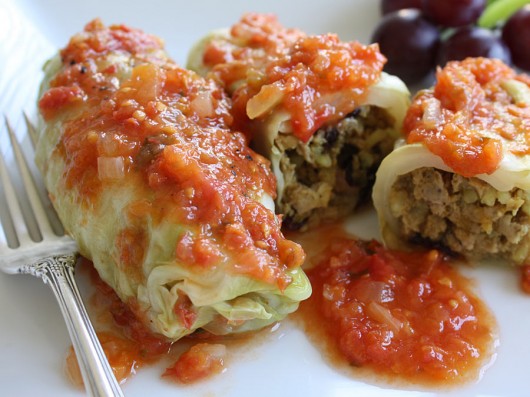 |
Stuffed Cabbage - History and RecipesHalupki, also known as stuffed cabbage, is a dish made of rice, beef, and pork encased in cabbage. It is drizzled with a sweet tomato sauce. JTA (Jewish Telegraphic Agency) says: "It is almost encoded in your Jewish DNA: How you make your stuffed cabbage all depends on where your grandmother came from. For many, the delicacy is served on the holiday of Simchat Torah much the same way that latkes are associated with Chanukah, hamentaschen tag along with Purim and Shavuot comes with a plethora of dairy dishes." From a Forum: "Cabbage rolls are part of the traditional cuisine of many Central European, Eastern European, and Balkan countries. They are known as holubki in both Czech and Slovak, halubcy in Belarusian, sarmale in Romanian, golubtsy in Russian, holubtsi in Ukrainian, and golabki in Polish (the word literally means "little pigeons"). A common variation in Slovak, Polish, Russian and Ukrainian is halupki. In German respectively Austrian they are known as Kohlroulade or Krautwickel, in Serbian as Sarma and in Finland as [characters in word not encoded in html]." From the top link below: Although the direct heritage of cabbage rolls cannot be certain, the lineage can be traced back to Jewish cooking some 2,000 years ago. Recipes vary among Jewish communities depending on region; Romanians and northern Poles prefer a savory sauce, while Jews from Galicia and Ukraine favor sweet-and-sour. Many variations of this traditional dish have since then been adapted throughout numerous cultures.
|